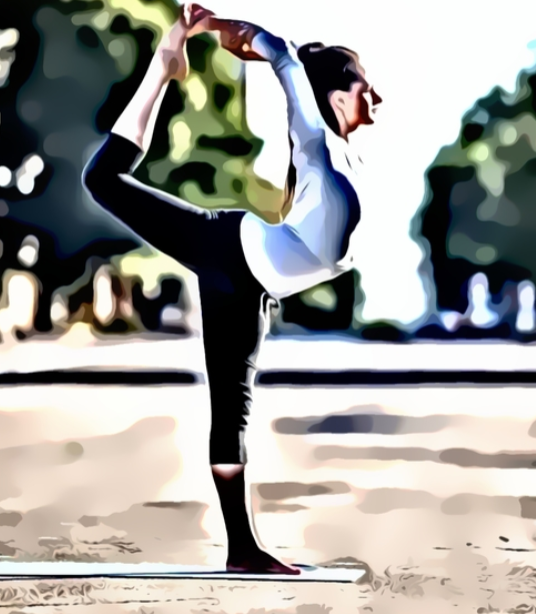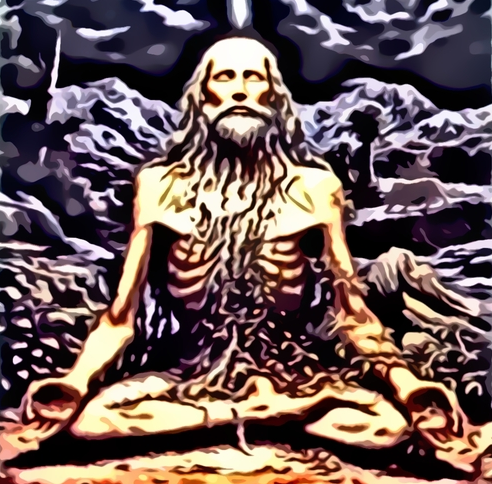In response to the comparison between the profoundness of yogic culture practiced in India to the other parts of the world, people practice several different methods for the betterment of individuals and others.
Yoga has been practiced in India from ancient times to Pre-Vedic times. It was found from various scriptures, sculptures, and various other shreds of evidence, which shows its profoundness for mankind’s well-being. India is a country where yoga practitioners seeking the ultimate realization along with spirituality. Near about every country around the world practices yoga. Yoga is recognized for well-being in almost every part of the world.
It’s true, that yoga has been practiced well before 5000 years ago. Indians believed that Adiyogi Shiva, the first Yoga Guru, started teaching his disciples various practices (about 112 ways) for achieving Moksha or the ultimate realization.
Table of Contents
Why Is Yoga Becoming So Popular Nowadays?

Yoga is becoming popular due to various reasons. In today’s world, people are becoming so busy. It is not like yesteryears where people had time to look after others or staying together in a big family. Having a traditional family or culture, maintaining nice relations and a strong bonding are things of the past.
Now a day’s yoga is getting popular because people have lost their happiness. People become so busy finding worldly pleasures, money, name, fame, and all possible luxury instead of finding inner peace and happiness.
Yoga has become the most popular way of finding peace and well-being inside. Yoga has survived a long way and has worked in the process of well-being like nothing else. People started realizing that everything is temporary including us in this beautiful world.
How Yoga Spread in West?

Yoga and the whole idea got publicity in western and other parts of the world on the go from around 150 or 160 years before. The Yoga and Spiritual knowledge were shared by realized being with their teaching in western societies.
For Example in America and Europe Paramahansa Yogananda, Swami Vivekananda and other Indian monks taught various ways of yoga. Yogacharya Krishnamacharya’s is also counted amongst them.
The difference in Yoga Practice
India is called the spiritual homeland of yoga. A very sidesplitting question comes to my mind regarding the practice of yoga. Whether the yoga practiced in India and other countries of the world are the practices are same?
Obviously no, because in India we see unity in diversity. The type of yoga practiced in various parts of India differs. With the ritual, the physical practice or the way of practicing all varies. The understanding even changes from various Gurus. So it’s not the same. But essentially we all practice yoga for the ultimate freedom or achieving realization.
Physical Fitness vs Mental Happiness
Yoga practiced in other parts of the world is more on the enthusiasm of the physical health. The idea is such that if you are physically 100% fit then the rest of the effects are smoothly taken care of.
This comes from the teachings as to how you can maintain good health. Good health is essentially a dynamic factor for being fit. It’s crucial for us in today’s world. If activities are well performed you are physically very fit.
The yoga practice that happens in various yoga centers around the world is more on improving physical attire.
Yogashram vs Yoga Studio
Practicing yoga in India happens in general from a Guru. Guru has mastery over various yogic processes. Here we practice yoga in a yoga ashram. These ashrams are fundamentally made up of simple facilities like bamboo, wooden structure, roofs are made with rice straw aka chabutra.
In the western world, Yoga is practiced in Yoga centers. These centers consist of modern equipment and so many well-appointed facilities. These are best for building your physical health.
Minimal vs Materialistic Support System
In India, a normal tradition is that yoga should be practiced with minimal materialistic support. it is practiced more in connection with nature. For example, yogis stay in a separate place away from the city or crowd. These are solitary places like the mountains. This is why Himalaya is a well-known place by yogis.
Difference in the Food Habit

The food habit for yoga learner or seeker in India is much different than other parts or western countries. The idea of having food consumed by a yogi must be sattvic. The food should not disturb the path in the direction of realization.
Ayurveda comes from various types of vegan combinations of roots, leaves, and herbs. The foods in India for yogis are more on vegetables and fruits. There are various combinations of vegetables, fruits, and their roots, leaves, etc. all these are used for various medicinal purposes also.
ब्रह्मचारी मिताहारी तयागी योग-परायणः | अब्दादूर्ध्वं भवेद्सिद्धो नात्र कार्या विछारणा ||
A brahmachari, practicing mitahara (moderate diet) and tyaga (renunciation, solitude), devoted to yoga achieves success in his inquiry and effort within half a year.
— Hathayoga Pradipika, 1.57[14]
It is said that Yogi must maintain austerity. Their 80% of food should come directly from nature. The foods should be easy to digest. From the food itself the essential energy comes and helps in Yog-Sadhana.
Difference in Lifestyles
In India yoga is considered one of the elementary grace of continuing life or a part of “Dincharya” (daily routine). This means yoga is customary practice for every person.
It is practiced for essentially understanding spirituality and its connection with the life force. Yoga is practiced to bring the well-being of an individual and the person around us entire internally and externally. It should bring peace and happiness as a natural consequence.
Deep Spiritual Connection
What Western societies have achieved from those spiritual beings has essentially given them various teachings on well-being. At the practice level, it is more emphasized on how to be fit and how to be healthy with your physicality.
Yoga is practiced not only for the growth of muscle but also for a deep spiritual connection to the eternal force. It was said by Krishna mentioned as Yogi doesn’t have fear of losing anything. The Yogi must overcome all the emotional attachment with worldly pleasure and emotions.
Practicing Meditation and Controlling Thoughts and Emotions

From the beginning of learning yoga, I started practicing meditation. It was to control our external thoughts and emotions and direct inward. This has been accomplished from ancient times in India.
Around the world how to control thoughts and emotions is a matter of discussion everywhere. Great monks and Sannyasis, Gurus taught how you can control our thoughts and emotions to the world.
In western countries meditation became the primary subject once everyone started realizing the essence of it. Now a day’s people from everywhere are realizing the real need for inner happiness. Meditation is an obvious part of ashtanga yoga.
Gurukul – The Ancient Way of Learning Yoga
Learning yoga and finding an unambiguous approach for the path of realization is taught from ancient times in India. In Gurukul, the concept is such that students used to leave their family at 12 years of age and they have to stay in Gurukul for 12 years. Performing austerity and celibacy also known as “Bramhacharya” is a common practice.
Finally, those brahmacharis become masters and confident in a skill which they love to perform for hours and hours without getting tired. This is the reason in Yoga there is no caste, creed, religion, nothing. The only priority is given to the well-being of humanity.
Guru must accessible by everyone, it was not confined in various cast systems introduced in hundred years ago.
Commercialization of yoga
According to Veda “yogi must have simple cotton clothes such as “Koupin” this is wearing by a yogi who used to just wear saffron clothes which essentially symbolizes the virtuousness.
In the west and other parts of the world, people start from the yoga studio. And whoever comes to practice yoga they started concentrating on making yoga a business idea and increase on fan follower on social media.
Here yoga is used for commercialized purposes for a billion-dollar business. There are many fashionable yoga clothes are nowadays produced by many companies. These outfits are essentially for the betterment of the physical body it is not for the improvement inside the inner improvement it is somewhat hidden.
The difference in the Style of Yoga Teaching
There are various types of yoga practiced in India. Ashtanga (eight limbs) yoga is one of them, another is Sashtanga (six limbs) another is Panchanga (five limbs), etc. various types of yoga exist in this yoga land India.
in India, the style of teaching considers more or less into four types; Bhakti, Gyan, Karma, and Raja Yoga. In Yogasutra Patanjali had mentioned on Ashtanga Yoga. Gorakhnath taught hatha yoga and it went on with Vinyasa yoga, Kundalini yoga, and other practices.
Vedic Yoga Practices
Yoga is practiced in India since Pre Vedic ages. In the Vedic period, it was more on ascetic practices like the pressure points and concentration of physical postures. Swami Vivekananda spread the knowledge of Yoga from Patanjali’s Yogasutra.
Many spells Swamiji referred to as four types of yoga known as Gyan, Karma, Bhakti, and Raja Yoga. Out of these types in connection with deep Spirituality, the master of all these four yoga practices is considered Raja Yoga.
He also mentioned various types of ashtanga yoga practice in Raja Yoga. Swami Vivekananda essentially spread the gist of Vedanta – the ultimate realization is possible through the state of moksha.
Physical Fitness vs Mindfulness
In the western world, yoga is practiced primarily to achieve physical fitness. it is fairly one part of the overall yoga process. Exercise or twisting or turning the body is mainly referred to as asana in yoga.
Asanas are practiced for the fitness of various joints, structures, tissues, limbs, and muscles. Eventually, actual yoga is something quite far.
Eliminating Personal Ego
Ego is a matter of gigantic issues everywhere. In European or western countries you might have seen yoga means twisting and turning of the physicality. Suppose a person with an unusual posture or tough posture wearing a modern outfit posing in a very exotic place is not performing the actual yoga. It is intended for advertising purposes, not real yoga.
A real Yogi will not showcase his or her capacity until and unless it is required. It should not be essential for publicize purpose but to become free with steady practice from the idea of physical and mental pleasure.
Seeking Spirituality does not Mean Seeking Religious Beliefs
Being spiritual fundamentally makes you an exuberant and joyful person inside out. This means you are improving your openness. Your mind becomes much more uncluttered. Seeking spirituality sincerely is about seeking something truthfully about realizing the true nature of our self.
Being spiritual is not becoming religious. Spirituality has nothing to do with any religion. Spirituality gives you freedom and clarity rather it does not impose any religious beliefs or any belief system.
My Personal View

In my personal view, there are a few fundamental differences between Western and eastern yoga culture. What I have learned from my teachers, I have developed myself emotionally and spiritually much enhanced.
Even you also can do it internally. In a way, personally, I think yoga is a lifelong learning irrespective of the difference in culture. We learn throughout our life. While learning Yoga or union, you must maintain patience. It’s not like bodybuilding, we practice in the gym. Simply building your muscle gym is enough.
It has to do more with our mental setup or Cleansing mind. Removing toxins or improving dopamine or refining physical health, enhancing body-mind connection Yoga is a great boost for all of us. Upgrading every possible way both physically and mentally is a natural consequence of yoga.
Do You Really Practice Yoga In The West?
Yoga in Western societies invests time in physical fitness. it is more synonyms to the asana which is a part of yoga practice in Ashtanga Yoga. It is in essence for the wellbeing of the physicality. If it is practiced steadily and regularly it leads to a very fit, strong, and flexible body.
But it is just part of the eight limb method. There are other practices too such as Yama (abstinences), Niyama (observances), Asana (yoga postures), Pranayama (breath control), Pratyahara (withdrawal of the senses), Dharana (concentration), Dhyana (meditation), and Samadhi (absorption). All these different types of practices for achieving truth.
When Did Yoga Become Popular In The West?
Yoga becomes popular in the early 1900 when many Indian monks started moving to Western countries. For example, Swami Vivekananda, Paramahansa Yogananda, Osho, and various other spiritual gurus started sharing their spiritual knowledge with the Western world. Fundamentally what they did was they taught us about the well-being of humanity.
Yoga – A Lifelong Learning
Yoga essential teaches the philosophy of living life in king size. Yoga in India is practiced as a stream of life or a way of practicing life. It is a culture it is lifelong learning. That’s why in India you will be seeing seekers, not believers.
We’re not believers as there is nothing fixed in yogis minds. Here we have many different types of Gods, beliefs, practices, etc. which’s why there are so many types of Festivals that exist in India. Yoga also is more than traditional exercise, it’s a lifetime practice.
Further Reading
Have you enjoyed reading about “Top 15 Fundamental Differences of Western and Indian Yoga Cultures | Top 8 Facts on Profoundness of Indian Yogic Culture”? Also, check various Topics on Yoga and about Steps to Control Porn in young People also. Please check the article Overpopulation in India 2020also. Take a look at our collection of articles about books for life as well as other categories in health & Inspiring Indians Life also. Alternatively, read our article about the top benefits of honey for fighting against coronavirus to increase our stamina, & other interesting ideas for various vegetables in our daily groceries.
